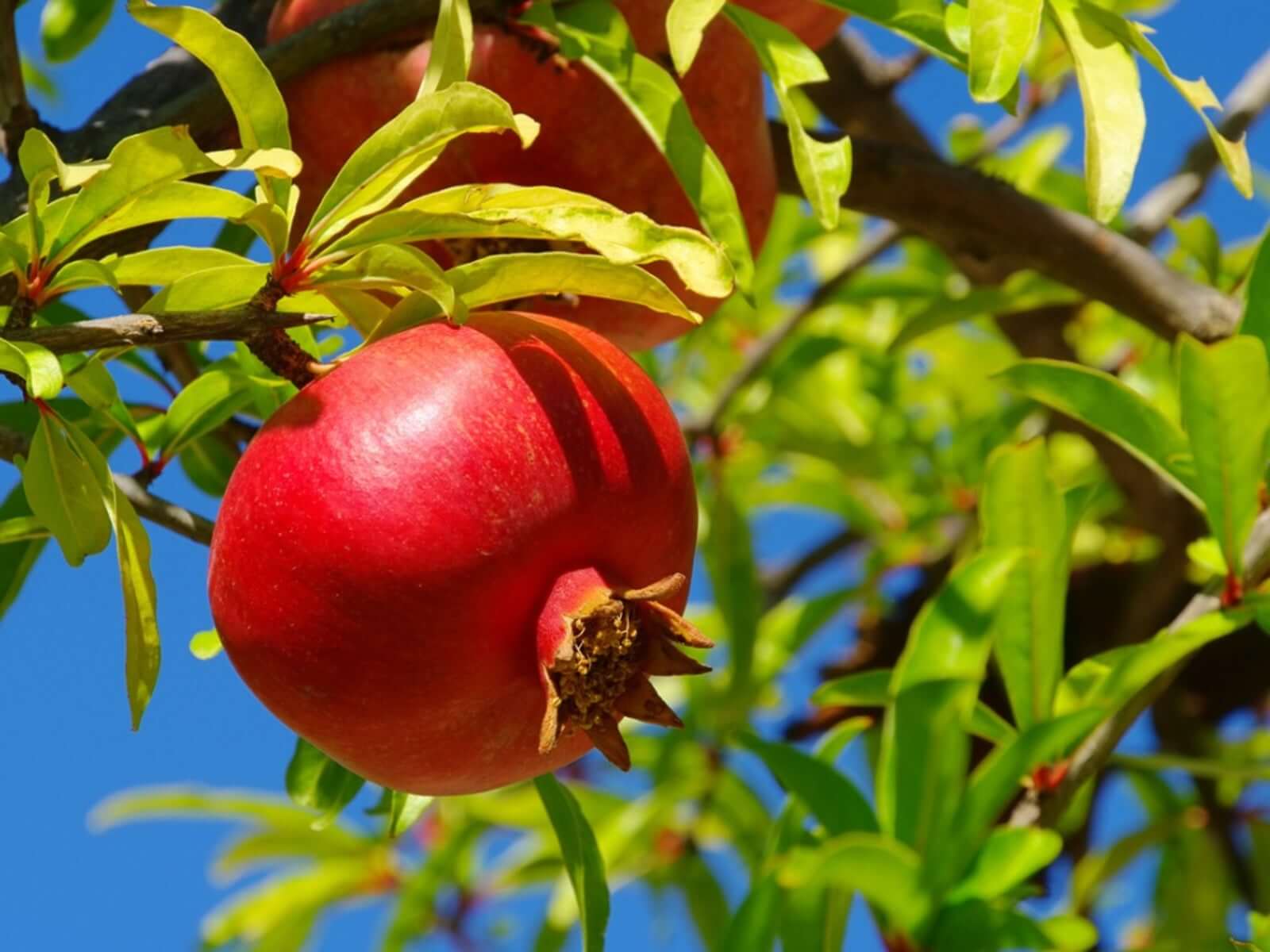- +033 2572 7171
- info@dhanvantary.com

4.5 Rating | 4500 Review

4.5 Rating | 4500 Review
It is extremely long lived small tree or shrub growing up to 6-10mt in height with numerous spiny branches. Leaves are narrow oblong, opposite or sub-opposite, 3-7cm long and 2 cm broad. Bright red colored flowers of this tree are 3 cm in diameter, with 3-7 petals. Edible and delicious fruit of this tree is berry which is intermediate in size between lemon and grapefruit.

Fruit is round shaped with thick and reddish covering. Number of seeds varies in each fruit surrounded by watery pulp seed coat with different colors from white to deep red or purple. All the seeds are embedded in spongy, white and astringent membrane.
Pomegranate is a fruit with many nutritional benefits. Its use as an herbal remedy in anemia is very popular. But it has many such similar health benefits which are lesser known but equally effective.
All parts of this plant are used for medicinal purpose such as the fruit, fruit rind, root and bark etc. The Latin name of this fruit is Punica Granatum and it belongs to Punicaceae family.
It is rich many vitamins like vitamin B – complex and minerals and is great for the heart. Pomegranate juice and seed powder is also used to prepare many food items and desserts, given their delicious flavor. The fruits are bright red in color and bear juicy seeds arranged like teeth inside the fruit carp. The seeds are edible and can be used in many different ways for consumption.
Sweet fruits are excellent for balancing dosha imbalance in the body. It is also good for relieving excessive thirst and heat inside the body. Pomegranate juice is a good natural cleanser which can be easily digested and absorbed by the body. It is great for the heart and helps to maintain a healthy immunity of the body.
It is a deciduous fruit bearing tree or shrub belonging to Punicacea family. Bright red colored fruits and flowers are its main attraction which also attracts a lot of birds and insects. It has been cultivated for ages in Modern day Iran and most of Mediterranean region. In India, pomegranate tree is fairly common apart from its occurrence in Spain, America, South Africa and Southeast Asia etc.
Kingdom
Plantae
Order
Myrtales
Family
Punicaeae
|
Hindi / Sanskrit |
English |
||
|
Rasa |
Madhur, Amla, Kashay |
Taste |
Sweet, Sour, Astringent |
|
Guna |
Laghu, Snigdha |
Physical Property |
Light, Unctuous |
|
Virya |
Anushna |
Potency |
Neither Cold nor Hot |
|
Vipaka |
Madhur, Amla |
Metabolic Property (After Digestion) |
Sweet, Sour |
|
Charak Samhita |
Vagbhata |
|
Hridya |
